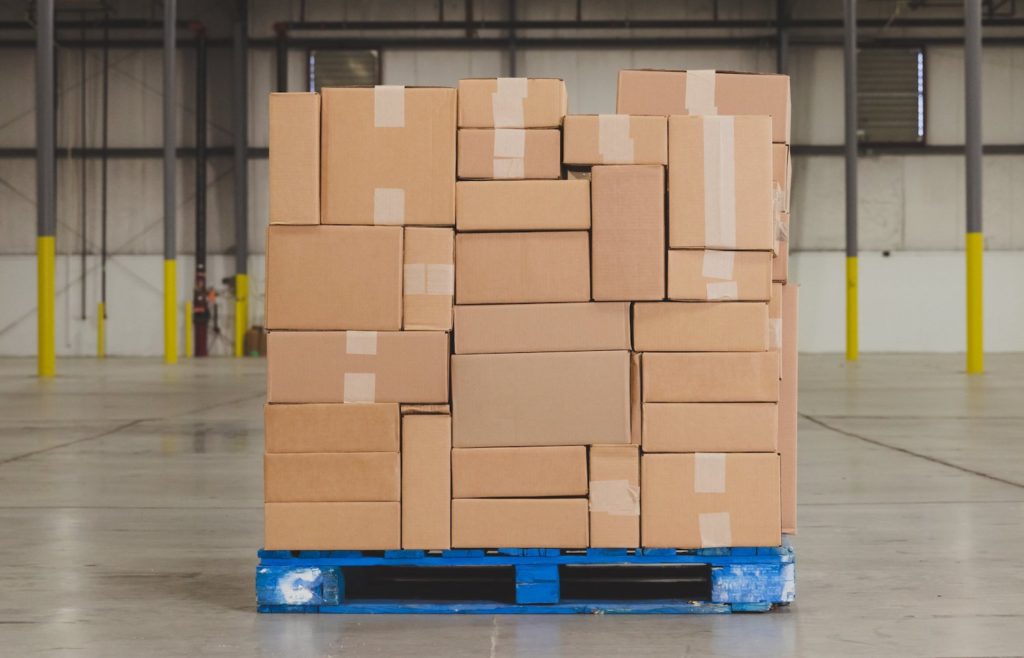
Leveraging Intelligent Automation in Logistics
Logistics and Intelligent Automation
Digitization and automation have made their way to the logistics link in the supply chain. This is a good thing as logistics has, up until now, suffered from the unfortunate cocktail of data overload and manual efforts.
Planning and managing loads has never been easy – more like a shot in the dark. There’s weather, infrastructure, shipping lanes, freight, types of transportation and a host of other considerations that must be considered for every load. Intelligent automation is changing how logistics is done, giving shippers, carriers and logistics pros real-time data and predictive analytics they never had before.
Intelligent automation may be a relatively new technology for logistics, but it’s gaining traction at remarkable speed. According to the IBM Institute for Business Value, AI-driven intelligent automation is expected to jump by 50 percent in only three years, with 80 percent of retailers and consumer product industries adopting the technology by 2021. The drivers? Efficiencies to drive down costs as margins shrink; the customer experience to secure brand loyalty amongst fickle consumers; and the need for better decisions that can be made faster for a more agile company.
What does this look like for logistics? Let’s take a deeper look into those drivers.
Intelligent Automation for Logistics Efficiency
It’s no secret that companies are fighting for every shred of margin they can get. Consumers are expecting more for less and are able to shop around for the best price. This causes manufacturers and retailers to carefully balance their costs with how much they can charge. From operations and R&D to manufacturing and shipping, companies have to be lean, agile and, well, efficient. It’s the only way companies can survive in this competitive, flat world.
Intelligent automation is helping. This isn’t about replacing people with artificial intelligence, but automating many of the traditionally manual processes and tasks required to do their jobs. Instead of working from spreadsheets, manually entering data from one system to the next, logistics professionals are relying on technology to bring all of the pieces together for them so they can be more productive and spend their time on execution rather than data collection.
Perhaps these are some of the reasons Market Research Future found the Intelligent Process Automation market is expected to grow by 40 percent in the next four years, reaching $8 billion. Companies no longer have the luxury of wanting to be more efficient. They must be more efficient if they want to remain viable. With intelligent automation, they can be.
When it comes to logistics, intelligent automation combines AI and machine learning to determine where efficiencies can be achieved from before the time the load is picked up until it makes it to its final destination. The technology has the ability to do what humans simply aren’t capable of doing as quickly or as efficiently: gathering hundreds of pieces of data near instantly, analyzing that data and then recommending a solution, even predicting future risks before they happen.
Related: Supply Chain Risk Management: Best Practices
Prior to a product being shipped, a company must analyze many variables to determine where those potential efficiencies may be gained. If a load, for instance, is sent along its normal routes without a thorough analysis of the predicted weather events along the route, the load is at risk for being delayed or damaged. This requires many people to step in and “fix” the problem, arranging alternative transportation, replacing damaged goods, restocking inventory and more. This is hardly an “efficient” way of doing business, nor does it help margins or customer satisfaction.
Asking employees to spend their time digging into weather maps and forecasts from California to New York, and then analyzing that data to determine where shipping lanes should be modified or scheduled pickups could be altered is cost and time prohibitive. It’s also likely only partially accurate to boot. Weather can change in an instant at any point along the route. By the time a human gathers all of their data, it’s likely out of date and unreliable.
Intelligent automation collects all of this data and much more automatically and in real time. It also considers other factors that could raise costs and workloads, such as infrastructure issues, social hazards, the wrong mode of transportation being selected or even the improper temperature of sensitive cargo. When all of these data points are combined, a full picture emerges, along with analyses and recommendations of how to optimize efficiencies and avoid potential risks that could jeopardize loads.
Intelligent Automation for Customer Satisfaction
Customers may be retailers, consumers of the product or manufacturers who need the product to produce their own product or part. The supply chain is complex and involves dozens, if not hundreds, of stakeholders. A single delay can cause major disruption up and down the supply chain. Customers, no matter where they reside on the supply chain, don’t get what they expected when they expected it and it directly impacts their satisfaction.
SDCExec.com puts it rather bluntly, saying, “Business expectations are changing, and now is the time to bring the consumer ‘Amazon-like’ experience into the enterprise supply chain software…A logistics manager seeing predictive insights about which loads are at risk, which ones to prioritize and even what is the next best action to proactively mitigate an exception – all that with one click on her mobile app.”
Intelligent automation helps logistics staff leverage AI-powered algorithms and machine learning to predict these risks and then initiate an automated workflow that follows the best possible path to avoid those risks. Companies can tailor the timing and type of transportation for fewer disruptions to the supply chain and less risk for customers being dissatisfied with their loads.
Related: OTIF Programs: What You Need to Know to Nail On-Time In-Full Performance Metrics
These types of capabilities will, at first, set companies apart from their competition, however, as they become an expected functionality, companies who fail to deliver (literally), will lose market share. Intelligent automation and other technologies sound great, but there are still those companies who are resistant to change. The IBM report suggests 70 percent lack management commitment, 60 percent cite limited IT budget, 30 percent have no integrated strategy, and 57 percent are simply unwilling to change.
Intelligent Automation for Better, Faster Decisions
At the heart of an agile company lies the ability to make informed, data-backed decisions quickly. The market and consumers are on a tight timeframe and those who waver will be left behind. Intelligent automation in logistics is giving shippers and carriers the ability to rapidly operationalize big data. Instead of the massive amounts of data overwhelming an organization, it is pieced together into a cohesive picture that makes decisions not only easier to make but faster, too.
The IBM report uncovered an interesting phenomenon. “Improving quality and speed of decisions” was ranked as the top expected benefit among 54 percent of executives who plan to execute intelligent automation in the next three years. But, for those executives who have already implemented intelligent automation, 83 percent report the quality and speed of decisions is their number one benefit, ahead of operational agility and efficiency, and improved customer experience. Clearly, intelligent automation is making a huge impact.
Logistics Management says AI, machine learning, blockchain, robotic process automation and advanced robotics will play a crucial role in the supply chain, augmenting supply chain leaders’ ability to make decisions and drive strategy for logistical decisions. These decisions may be to reroute a truck or shift load dates to avoid a weather event or highway construction, choosing to ship freight in a reefer truck due to extreme temperatures, selecting an alternate mode of transportation, or simply setting the proper expectations with the customer. With the right data in hand, leaders can make informed decisions quickly to reduce costs and avoid customer satisfaction issues.
Related: Top 6 Things You Must Have in a Transportation Risk Analysis Solution
The best intelligent automation solutions will not only gather the many pieces of data and assess risks, but they will also provide a visual scoring method that makes those risks obvious to further speed decisions. Some solutions color-code risks or give them a number, allowing staff to quickly see where to focus their attention. They can look at a dashboard that identifies high-risk areas and issues among all planned loads by pick-up date that need immediate resolution. They can see the loads in route and the average days before delivery – and how much risk those loads face along their lanes. These are but a few of the operationalized data points shippers and carriers can see, all thanks to intelligent automation.



